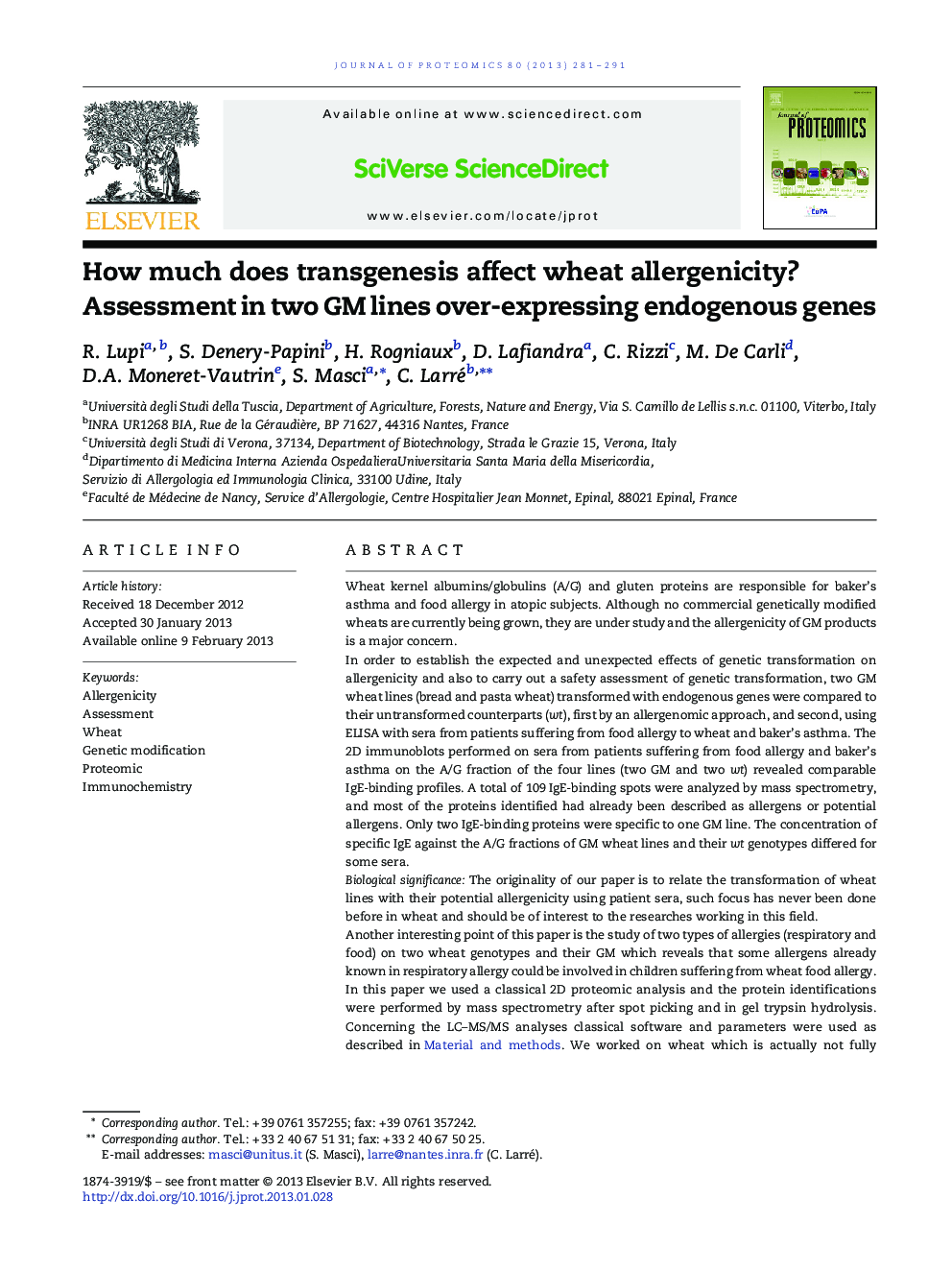| کد مقاله | کد نشریه | سال انتشار | مقاله انگلیسی | نسخه تمام متن |
|---|---|---|---|---|
| 1226239 | 1494800 | 2013 | 11 صفحه PDF | دانلود رایگان |

Wheat kernel albumins/globulins (A/G) and gluten proteins are responsible for baker's asthma and food allergy in atopic subjects. Although no commercial genetically modified wheats are currently being grown, they are under study and the allergenicity of GM products is a major concern.In order to establish the expected and unexpected effects of genetic transformation on allergenicity and also to carry out a safety assessment of genetic transformation, two GM wheat lines (bread and pasta wheat) transformed with endogenous genes were compared to their untransformed counterparts (wt), first by an allergenomic approach, and second, using ELISA with sera from patients suffering from food allergy to wheat and baker's asthma. The 2D immunoblots performed on sera from patients suffering from food allergy and baker's asthma on the A/G fraction of the four lines (two GM and two wt) revealed comparable IgE-binding profiles. A total of 109 IgE-binding spots were analyzed by mass spectrometry, and most of the proteins identified had already been described as allergens or potential allergens. Only two IgE-binding proteins were specific to one GM line. The concentration of specific IgE against the A/G fractions of GM wheat lines and their wt genotypes differed for some sera.Biological significanceThe originality of our paper is to relate the transformation of wheat lines with their potential allergenicity using patient sera, such focus has never been done before in wheat and should be of interest to the researches working in this field.Another interesting point of this paper is the study of two types of allergies (respiratory and food) on two wheat genotypes and their GM which reveals that some allergens already known in respiratory allergy could be involved in children suffering from wheat food allergy.In this paper we used a classical 2D proteomic analysis and the protein identifications were performed by mass spectrometry after spot picking and in gel trypsin hydrolysis. Concerning the LC–MS/MS analyses classical software and parameters were used as described in Material and methods. We worked on wheat which is actually not fully sequenced that was a difficulty; we therefore searched against two databanks (proteins and ESTs) in order to compare the results. Moreover all proteins reported in our paper were identified with at least three unique peptides.The identified proteins were checked for their potential allergenicity. In order to have a best interpretation of protein identified in terms of potential allergens, BLAST alignments were performed by using an allergen databank (SDAP). This allows the determination of the cross-reactivity of these identified proteins with known allergens of other species and also the prediction of a potential allergenicity.
Figure optionsDownload high-quality image (145 K)Download as PowerPoint slideHighlights
► Both transformation events affected the A/G fractions of wheat grains.
► Most IgE-binding spots are common between wt and GM lines.
► Two IgE-binding proteins were specific to one GM line, one already described as allergen.
► Specific IgE concentration of 8 patient sera out of 18 differed between wt and GM lines.
Journal: Journal of Proteomics - Volume 80, 27 March 2013, Pages 281–291